The driest place in the world
Today I am going to take you on a trip to an unusual place. Behind the mountains, beyond the forests, in distant South America is a long and narrow country wedged between the Pacific and the Andes. It is Chile - a country with a rich tradition, intermingled cultures of the Mapuche, Quechua peoples, and colonizers, mainly Germans and Spaniards. A country that delights with its wealth, landscapes, and untouched nature. A country where the earth shakes every week. Where the enormity of active volcanoes and the threat of Tsunami remind us of how fragile human life is. In this wonderful country, in the very north, is the Atacama Desert - the driest part of our planet.
It would seem that the Atacama will bore the traveler with its monotony after just a few days. Nothing more wrong! I spent 10 days there, intensively visiting the most interesting parts of the region from dawn to dusk (and often even at night), and I still couldn't see everything.
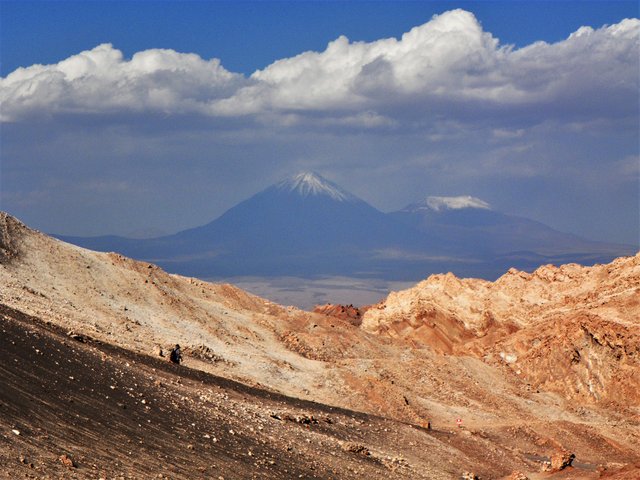 Photo by @papi.mati
Photo by @papi.mati But let's start from the beginning: it's best to start exploring the desert by arriving in the small town of San Pedro de Atacama. The town does not have much to offer travelers looking for authenticity. Apart from the old church, everything you find is artificial - hotels, hostels, travel agencies offering tours, car rental, and restaurants. A bit like Disneyland was created to draw as much money as possible from a tourist. So why is it worth staying there?
Well, if we don't have our car and tent, this will be the most convenient option to stay in. The distances between interesting places in the desert are huge, poorly marked, and there are very few towns in this area. In San Pedro de Atacama, we have the opportunity to find a place to stay (and at night the temperatures drop below zero, so having the roof over the head is quite important), stock up on water and food, rent a car, or take advantage of an organized guided tour.
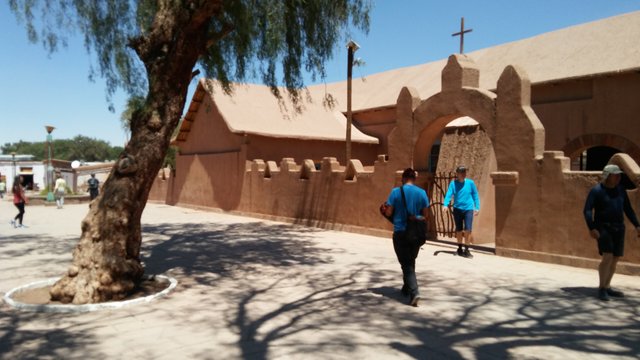 San Pedro de Atacama - photo by @papi.mati
San Pedro de Atacama - photo by @papi.mati 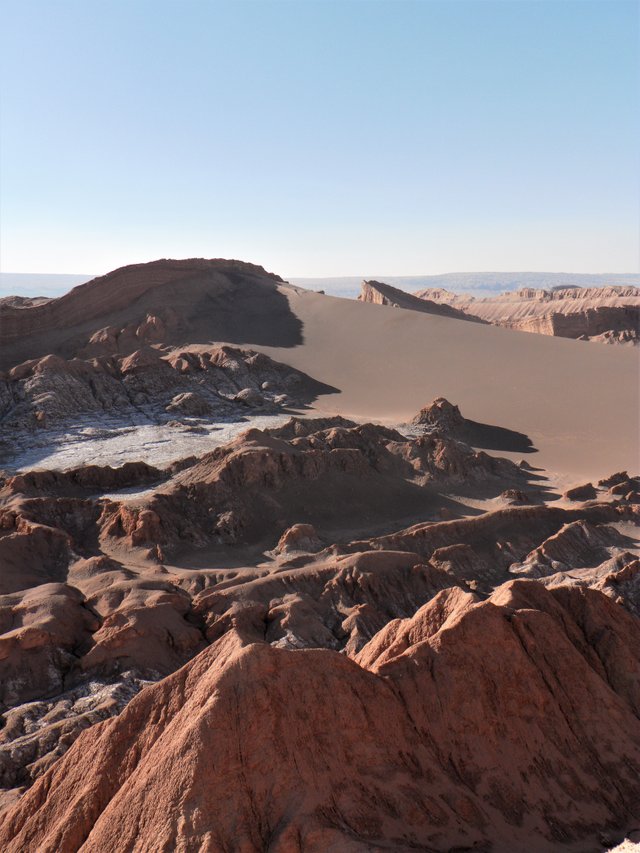 Photo by @papi.mati
Photo by @papi.mati I was on a trip three years ago and to be honest, having little time and wanting to see everything, I overdid the number of places visited. Moving from dawn to dusk, I lost more than if I had visited half of these places in peace. I don't remember much information about specific destinations. Luckily, photos can help with reviving memories.
The most important attraction in the region is the Valle de la Luna, or moon valley. It owes its name to cosmic landscapes. You will find no life there, not even the smallest vegetation, only rocks, and sand. Such conditions meant that it was decided to test the first Mars rovers here - the terrain is most similar to that of the red planet. In some spots, there was no rain for at least 300 years!
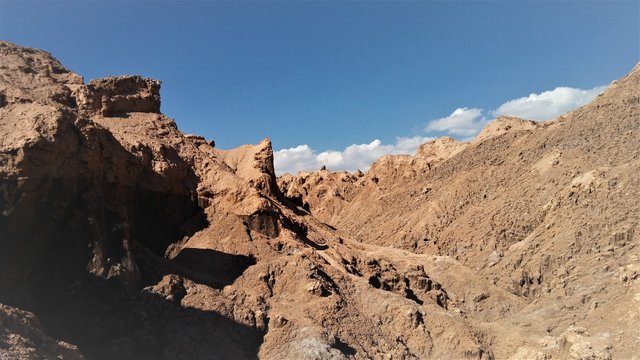
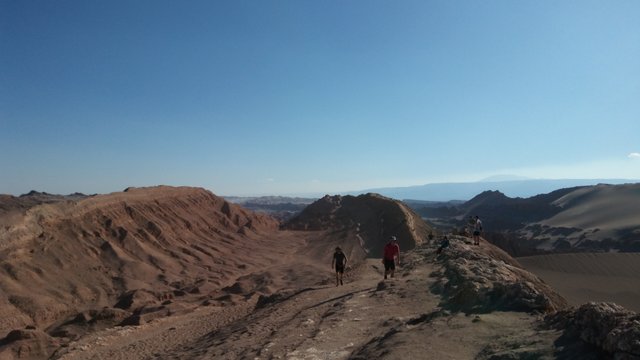
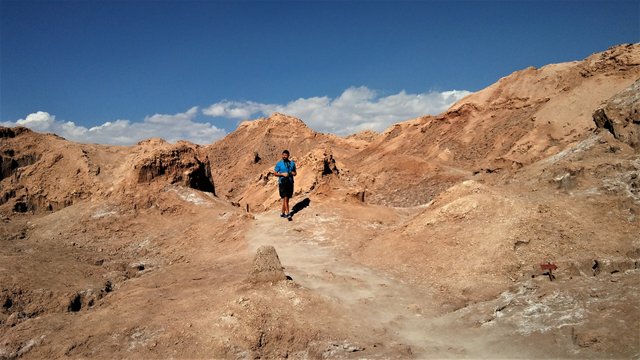 Photos by @papi.mati
Photos by @papi.mati However, not all parts of the desert are equally dry. There are also lakes in the Atacama - the ones in the middle of nowhere are ponds with underground water - sometimes sweet, sometimes as salty as in the Dead Sea. Of course, all water reservoirs attract tourists who like to bathe in them.
The lakes located higher in the Andes are already part of nature reserves and instead of bathing people, you will sooner encounter flamingos or llamas here, attracted by the possibility of quenching thirst. Here is a curiosity: llamas are the South American cousins of camels. They are divided into three species of animals: llamas and alpacas, which were domesticated for wool (you can drink their milk too, but they produce very little of that), and vicuñas, their wild cousins who cannot be domesticated. Vicunas are under strict protection, there are very few of them left. This is because their wool cannot practically be harvested without killing the animal. Okay, the indigenous peoples, Quechua and Aymara, came up with a method that has been used for hundreds of years, but it is not suitable for obtaining large amounts of wool: animals were scared and chased towards cacti. When the vicuñas rubbed against the spines of the plants, they left their wool on them, injuring themselves but not dying. Clever, right?
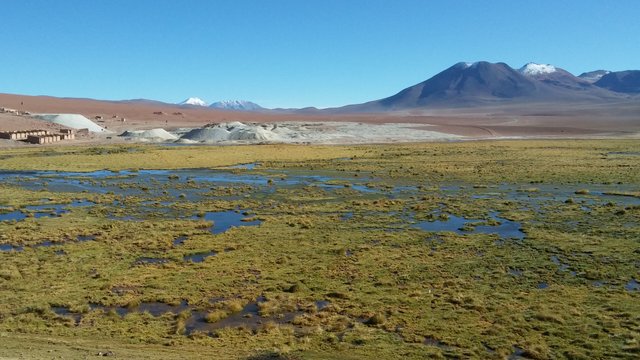
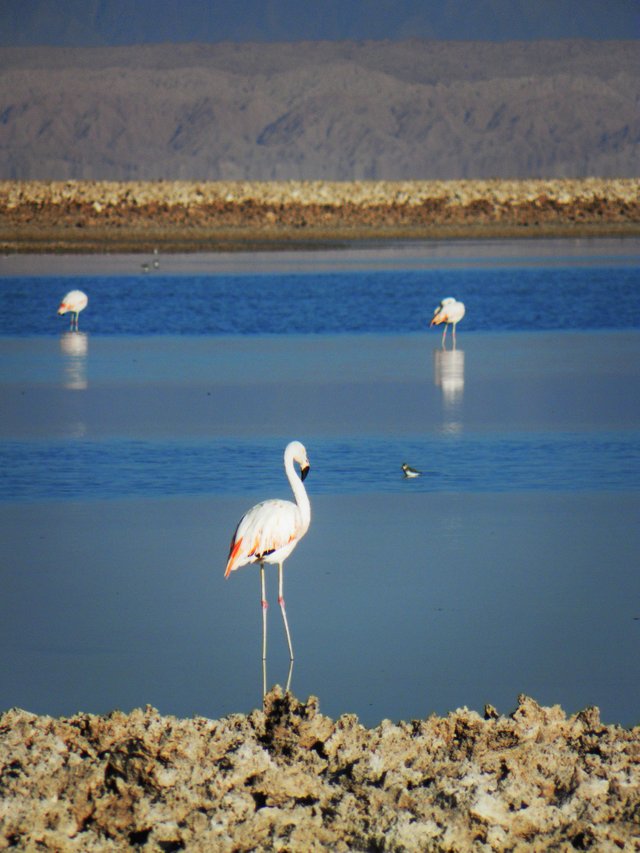
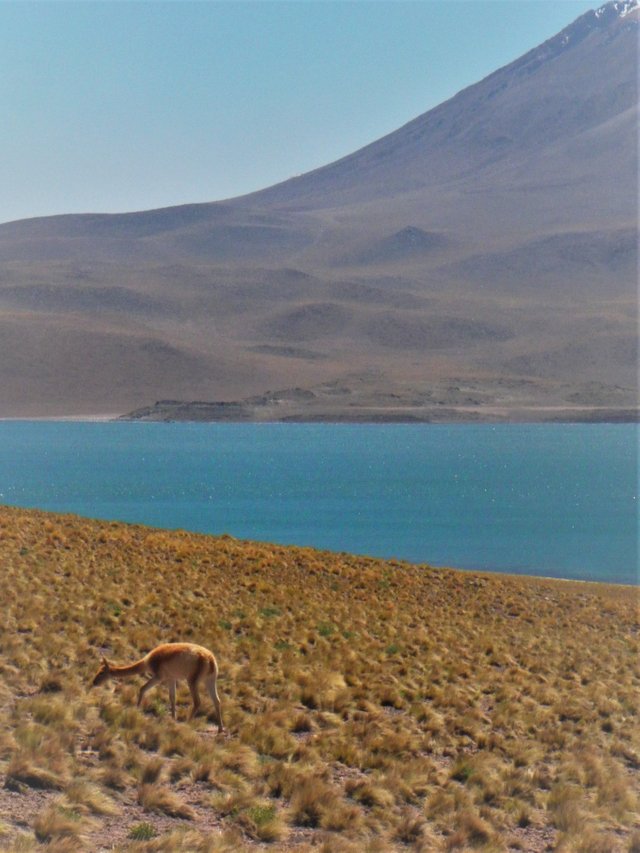
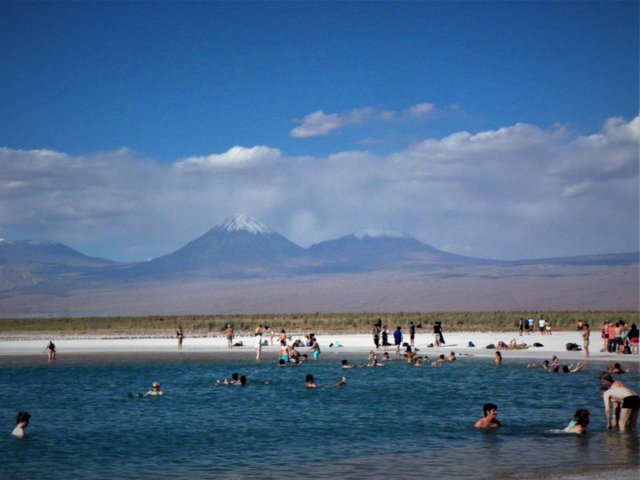 Photos by @papi.mati
Photos by @papi.mati Now that we've mentioned the indigenous peoples, it's worth mentioning that the Atacama was located on the Inca Trail. The Incas created an empire that, immediately before the arrival of Europeans, reached even south to the current Santiago de Chile. The desert was traversed along special trails marked with several stones placed on top of each other.
Okay, but back to the description of the desert itself: we mentioned the lunar valley and similar canyons, we mentioned national parks, lakes located in them and freshwater tanks in the middle of the desert, flamingos, llamas, and indigenous peoples. In order not to prolong my post too much, let me suggest only two more attractions worthy of your time:
The first is observing the sky at night with a guide-astronomer. In the middle of the desert, hundreds of kilometers from the nearest towns, the starry sky reveals all its beauty to us. Nowhere else in the world have I seen so many stars in such a delightful view! With a telescope and an astronomer who tells you what to do, you can spend the whole night in a very interesting way. I wish my camera had been able to capture the beauty of this experience. There will be no photos from the event, but trust me - you will not forget the Atacama night for the rest of your life.
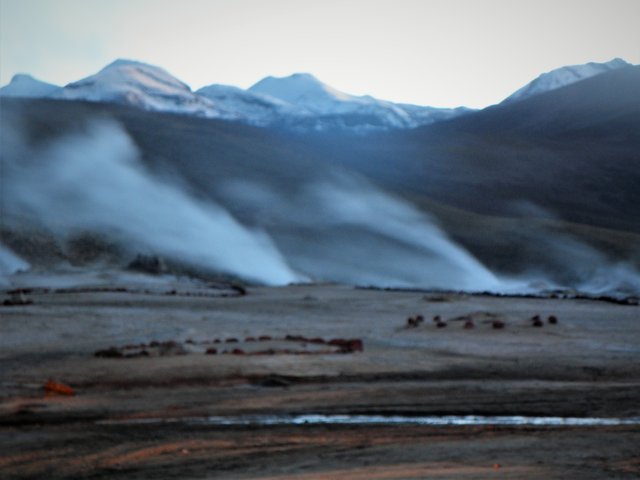
The second attraction worthy of your time is the del Tatio geysers. The geysers are quite far from the town, so usually, tours leave as early as 3 am. A light breakfast is served there (light, because you will be at an altitude of more than 2,500 m above the sea), then you can use the hot springs, and finally, you visit the geysers themselves, which are most active at sunrise.
Hot springs in a place where you do not want to take off your down jacket are delightful until you need to get out of the water. Then it's not so nice anymore;)
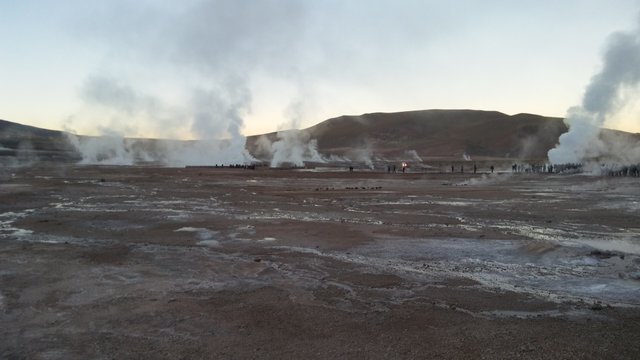
Geysers are impressive. The whole landscape resembles Mordor. Places with gurgling water are properly unprotected, lightly marked with stones laid on the floor. The guide, who asked for caution, did not add a sense of security. She mentioned that last season a tourist tripped himself while taking a selfie and lost his life due to hot water (initially we thought it was a fairy tale for tourists, but we googled it and it happened). The whole area is very different from everything else we saw on the Atacama and that's why it's worth visiting.
Of course, San Pedro de Atacama also set off trips to Bolivia, including Salar de Uyuni, but we did not use them at that time, because my passport expired. We got to Bolivia a year later, but that's a completely different story.
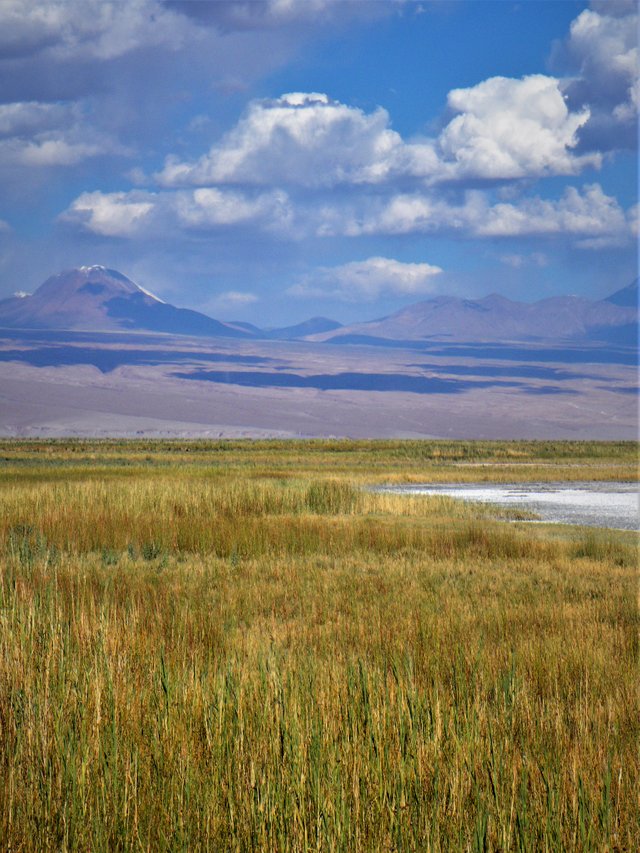 Bonus - my favourite photo from the trip. Made by @papi.mati
Bonus - my favourite photo from the trip. Made by @papi.mati
We should be exporting stars to your country because we have it in excess. They are so many that we don't have the time to look at them. No one has the time to go star guessing in Africa because the stars are always in the sky and we don't need a telescope to see them. If you should look up and can't see the stars at night, then it's about to rain for sure. When electricity is interrupted, the moon and stars are at their best and I can remember doing my homework with light from the moon.
Your post is lovely. I will like to see a Geyser and If I should bring one down here, I would place it in my farm as a scarecrow and crops will be safe from thieves. It will be viewed as witchcraft of the highest order.
Downvoting a post can decrease pending rewards and make it less visible. Common reasons:
Submit
True! We dont notice anymore the beauty we have 24/7. That's why on the desert even the normal grass can be breathtaking. Thank you for the comment :) pity that you cant teleport those geysers 🤠🤣
Downvoting a post can decrease pending rewards and make it less visible. Common reasons:
Submit
Fantastic images, colors (!), wildlife.
300 years without rain - hard to imagine how it is possible on this planet where water is everywhere. An ancient curse by ancient gods, I have no other explanation ;) (Although I had meteorology at university but ... Too long time ago... Probably a cold current along the coast...)
Boiled tourist -- selfie-related deaths are a phenomenon. Some curious selfie deaths here https://en.m.wikipedia.org/wiki/List_of_selfie-related_injuries_and_deaths
"Behind the mountains, beyond the forests, in distant North America" --
South...
Alas, Atacama is too far away so I only can dream. But some steppes and deserts are available in Kazakhstan (Mangystau Region, for example) and the Central Asia....
Downvoting a post can decrease pending rewards and make it less visible. Common reasons:
Submit
So that was Belgian! I didn't remember that. The accident from el Tatio geysers included in the list in your link
Too many thoughts in one place. Probably was already thinking about writing that it's north of Chile. Thanks, edited.
Kazakhstan and Mongolia are my dreams! I would love to explore those two countries. Some day I will surely visit it. Crossing the steppes on the horse - that would be something ;)
Downvoting a post can decrease pending rewards and make it less visible. Common reasons:
Submit
I didn't know that the Germans were developing and colonizing lands in South America? I've never heard anything about it. I thought they only fought in Africa.
It seems surprising to me that in such places, which we consider "hot countries", there can be negative temperatures at night. Very large temperature differences.
I have been in a similar situation during multi-day fishing trips. It's very hot during the day, I thought the night would be warm, I didn't take warm clothes with me, and then at night I was cold and had to sleep very close to the campfire.
Chile is something very far away and out of reach for me and my friends. The more interesting it is to learn about such countries from specific living people.
Thanks.
#travelers-say
Downvoting a post can decrease pending rewards and make it less visible. Common reasons:
Submit
Germans did not colonize directly any land in Latin America but currently more Chileans mentiones German origin than Spanish (in fact it's always mixed and 90% of them has Spanish blood as well). It's because when the country got independent in XIXth century, Chilean government was inviting people from Europe to help to populate the south and there was this guy (or, like in Araucanía -"make it more white", change the proportion of Europeans to native people to enslave them more effectively... Yeah, awful...).
Two regions were totally populated by Germans - it was the idea of some politician with the German origins.
https://en.m.wikipedia.org/wiki/German_Chileans
Downvoting a post can decrease pending rewards and make it less visible. Common reasons:
Submit
Here it turns out how it was. I didn't know about it. Thanks for the information.
I know that after the Second World War, many Germans fled to Argentina.
And I also saw a report that there are Russian settlements of Old Believers in Argentina.
Downvoting a post can decrease pending rewards and make it less visible. Common reasons:
Submit
Yes, you are totally right. Slavic ancestors are keeping together in Argentina and there is the most of them in region Missiones. Germans too, naturally - Nazi refugees after the lost war migrated mostly to Argentina and Paraguay.
Downvoting a post can decrease pending rewards and make it less visible. Common reasons:
Submit
Beautiful place. Good thing you had a great time. Beautiful images. Thanks for sharing. Greetings 🌺👍🌻
Downvoting a post can decrease pending rewards and make it less visible. Common reasons:
Submit
Hola amigo @papi.mati Un gran saludo. Bonita experiencia pude leer en su publicación. Me llamó la atención especialmente las aguas termales y el cambio drástico de temperatura que debe sufrir el cuerpo al sair de allí. Me parece un poco peligroso.
Me imaginé el frío tan intenso de ese lugar.
travellers-say
Downvoting a post can decrease pending rewards and make it less visible. Common reasons:
Submit